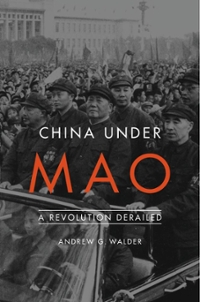Answer the following attachments correctly.
2. Interpret and report results in Microsoft Word a Copy the display below to Microsoft Word. DO NOT CREATE A TABLE. In(Q3) = bo + b, In(P-1) + b2In(P) + bytime + b4In(Q=]) s.e. ( ) ( ) ( ) R. = T = Complete the display with the values from the regression output in Excel. For example, replace by with the estimated coefficient for In( P, ) and below in parenthesis write its standard error (s.e.). Adjust the parentheses below each term as needed. Also, enter the R? and the number of observations (T). In all cases, use three decimal places. b. Notice the signs of the estimated coefficients b, and by. 1. Are the signs what you expected? Provide reasons for your expectations. ii. The coefficients are actually price elasticities of supply. Interpret each elasticity. c. The coefficient on time should be positive. Does it make sense that it is positive? Explain. d. Interpret the R? for the estimated regression. e. Using the estimated equation, predict the aggregate production of young chicken in 2001, if it is expected that the nominal price index for broiler feed is 102.9, and the overall consumer price index is 177.1 in 2001.a) the marginal product of the 6" unit of labor? b) at what level of labor APL and MP, equal? c) the total cost of producing 455 units of output 3. Assume a firm with a production function =12104xof and buying labor and capital with a market price of $5 per unit and $40 per unit respectively. If the firm has total outlay of $800, what combination of inputs(labor and capital) would the firm use in order to produce the maximum possible output. 4. Assume a firm with a production function of = 2523 X and buying labor and capital with a market price of $3 per unit and $12 per unit respectively. Find the optimal combination of labor and capital producing 1250 units of output.1. Assume that the market for steel is competitive. The inverse demand curve for steel is P = 120 - Q and its inverse supply (i.e., industry marginal cost) curve is P = Q + 20, where P is price and Q is quantity. (a) Depict these inverse demand and supply curves in a diagram and use algebra to calculate the market equilibrium values of price, Pc, quantity, Qc, and price elasticity of demand, Ec. [10 points] (b) In the above context, also calculate consumer surplus, CS, producer surplus, PS, and social welfare, SWc. [10 points] 2. Suppose that the industry in Question 1 is taken over by a monopolist. (a) Depict the monopolist's profit maximization problem in a diagram and use algebra to solve for the values of price, Pm, quantity Qm, and price elasticity of demand, Em. [10 points] (b) Calculate the impacts of monopolization in terms of the resulting changes in consumer surplus, producer surplus, and social welfare. [10 points] 3. (a) Return to the scenario in Question I and assume that the process of producing steel causes air and water pollution, which result in marginal external cost MEC = 20. Taking this externality into consideration, calculate the socially optimal level of steel production, Q, and illustrate its determination in a diagram like the one for Question 1(a) by using any additional curve that may be needed. Also calculate social welfare, SWs. [10 points] (b) If the competitive market fails to account for external costs and continues to produce at Qc (from Question 1(a)), what would be the resulting loss in social welfare? Explain your calculation with the help of a diagram. [5 points] (c) Calculate a per unit tax that could correct the market failure in part (b). If this tax is implemented, what would be the resulting values of social welfare, consumer surplus, producer surplus, total external costs, and total tax revenue? Also illustrate these areas in a diagram. [15 points]wol function? (ii) What are firm's wy verive the formula for its MC. (iv) What is the short-run shut down production point for this firm? b. In the long run a firm produces q = 100 using L and K which are imperfect substitutes. (i) Show the cost minimization equilibrium point of this firm using diagram. (ii) Using calculus/equation show that at this point marginal rate of technical substitution is equal to input price ratio. (iii) On the same diagram show the equilibrium for the second firm, which uses more K and less L (than the first firm) to produce the same level of output. Question 3 a. Suppose the profit of the firm that produces output q is given by (q), the revenue is given by R(q) and the cost function is given by C(q). (i) Using calculus, derive the profit maximizing condition for this firm? For a perfectly competitive firm, how can we write this condition? (ii) Using diagram show the short run equilibrium when the firm is arning abnormal profit. (iii) Show the long-run equilibrium in the diagram. b. Given that a competitive firm's short-run cost function is C(q) = 100q - 4q2 + 0.2q3 + 200, what is the firm's short-run supply curve? If the price P = 115, how much output does the firm produce? estion 4 1. Using downward slopping demand and upward slopping supply curves of a product, competitive equilibrium, (i) show the measure of consumer surplus (CS), producer










